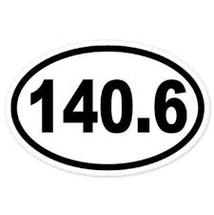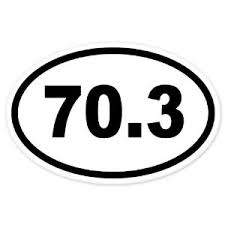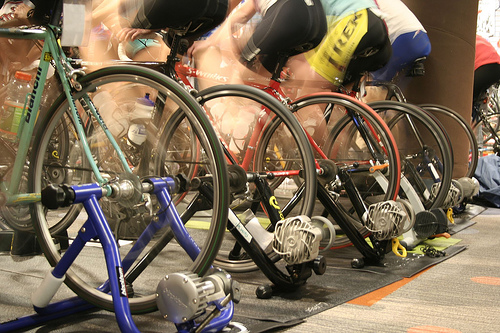For Masters athletes, executing longer workouts properly is even more critical. As we age, we do get slower, especially the farther past 40 we get. But, we can certainly train every bit as intensely during our hard workouts as we did 10-20 years ago; we just can’t handle the volume of high-intensity work that we used to because our bodies don’t recover as quickly as they used to. The rub is that the high-intensity work is even more critical for Masters athletes than when we were younger.
So, what do I mean by “properly executing” longer workouts? Effectively, the longer the workout, the easier the effort needs to be. On the shorter end of the spectrum, it could make sense to insert some L3 intervals in the middle or toward the end of the workout. But, in general, you want to cap your effort at the top end of L2 (up to 78% of Max HR or about 75% FTP on the bike if you track power). The top of L2 is the cap, this is not where you should try to hold the entire workout. Doing so will feel fairly easy at firs but will ultimately become impossible due to things like fatigue from the duration of the workout, cardiac drift, dehydration and more.
Thinking about this metabolically, when you’re sitting on the couch at home, you are producing lactate, about 0.8-1.2Mmls in the blood. At L1 recovery effort, blood lactate can rise to about 1.5Mmls and during steady aerobic work within the L2 zone, blood lactate peaks at around 2.0Mmls. Even in L3, blood lactate stays pretty well in check, typically rising to about 2.5Mmls. However, in L3 you are also starting to recruit a good amount more of anaerobic muscle fibers, which is why despite the relatively small uptick in blood lactate you can only hold your L3 zone for a maximum of 75-120 minutes. When you start to focus on TT-specific work in the SST/L4 zones, blood lactate jumps dramatically to around 4.0Mmls. So, a big increase from L3. At SST/L4, you’re OK for a 10k running race or a 20-40k time trial on the bike or a 1.5k swim.
Compare how long it takes you to complete these time trial efforts vs how long your typical long workouts are and you start to see why you need to put a cap on your effort during long workouts, right? The purpose of the long workout is to make the body more aerobically efficient. To push your long workouts as hard as you can and to finish them completely spent does a disservice to your preparation. Your goal should be to settle in for the long haul, let your HR or power rise and fall naturally between L1 and L2 as the workout and terrain dictate, and focus on finishing the workout stronger than you started it. Break the workout up into quarters and focus on building your effort as the workout progresses. The key is to always feel like you’re settling in rather than like you’re always pressing. Long workouts like long races are about settling in, about finding efficiency through movement, about not burning matches for the sake of lighting them.
Hand-in-hand with this strategy around pacing is the fueling and hydrating aspect. There is only so much glycogen the muscles can store, enough for about 60-120 minutes of working out depending on how hard you are pushing the effort. So, to go long effectively, both fueling and hydrating become critical. We all know this but how well do we all practice it? The more you can spare muscle glycogen, the better and longer you will be able to perform. Case in point. Last weekend I rode 5 hours. I was hydrating just fine but under-fueling. At 4 hours, I could tell my body was starting to go into overdrive to find the fuel it needed. I wasn’t carrying enough and had to ration what I had left. At 4:30, my body was scraping the bottom of the barrel, I bonked and that last 30 minutes was sheer agony. Today, I did the same 5-hour ride but fueled more consistently and more often. My final hour was stellar and I finished feeling like I could have tacked on yet another hour. A completely different experience that final hour.
Endurance athletes have to get away from the mentality of flogging ourselves every time we step out the door. Not only is it unhealthy to do so, it’s counterproductive. After bonking last weekend, I really didn’t feel that great in my workouts until today’s long ride. A whole week went by where I performed well but could feel the lasting effects of the bonk. Too many athletes are perpetually in this sort of state and, thus, believe that the deep-rooted fatigue is natural; it’s part of the game. Well, it’s not. I know for a fact that this upcoming week of training will both feel and go much better than this past week because I avoided dipping too deeply into my reserves today.
If you’re self-coached, take a step back, look at your program and how you approach your workouts. Assess where you can better ease off the throttle. Trust me, easing off is essential to improving performance. Not in every workout, but certainly anything that is not focused on high-intensity (L5+). If you work with a coach and that person is having you throttle yourself in longer workouts, ask him/her why. Why are you taking a workout that is specifically meant to tax the aerobic system and introducing aspects that counteract this? It’s a valid and crucial question to ask.
At the end of the day, the biggest limiter for endurance athletes is not speed; it is endurance. Yes, speed work is essential, but it is the endurance work that will carry you to the finish line faster than ever before.
Happy Training,
Coach Nate






 RSS Feed
RSS Feed